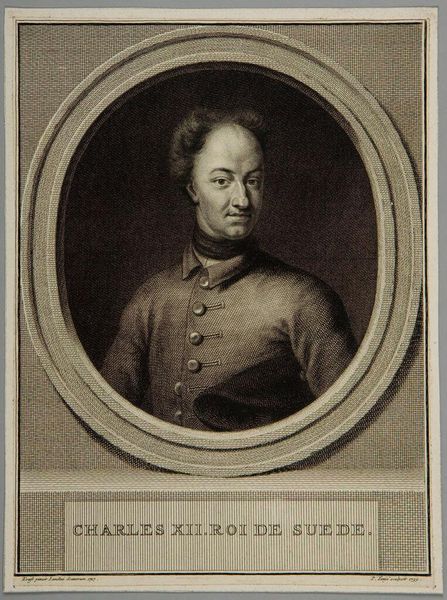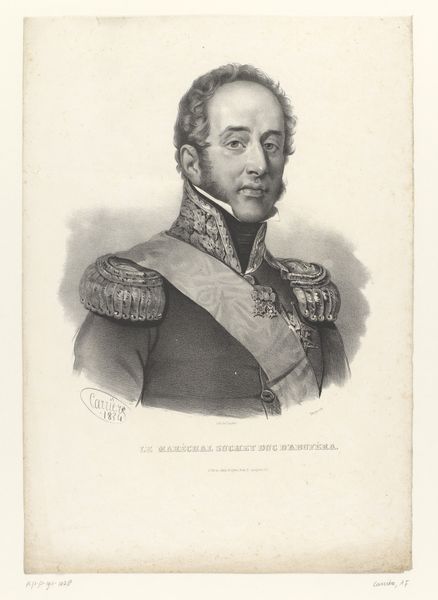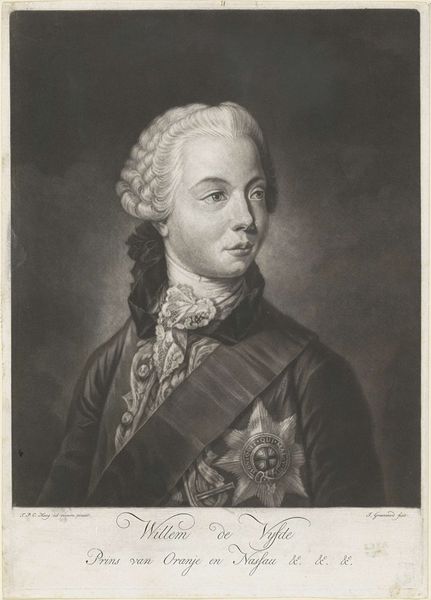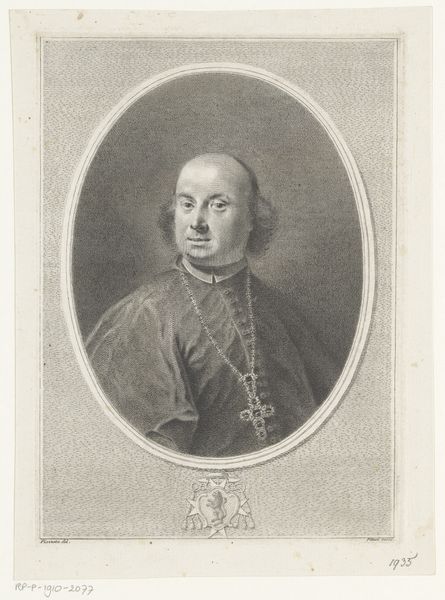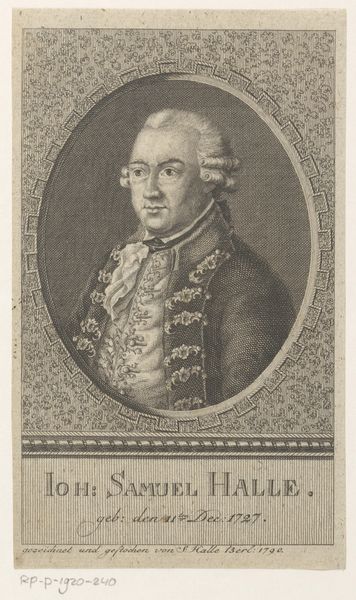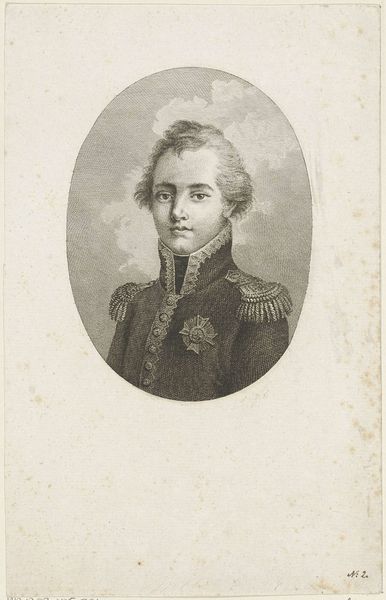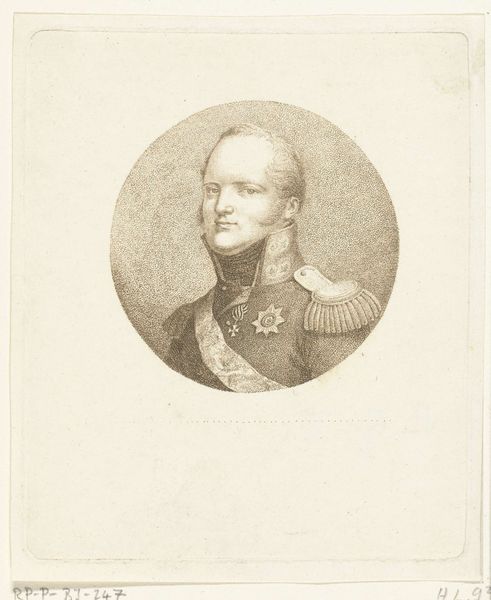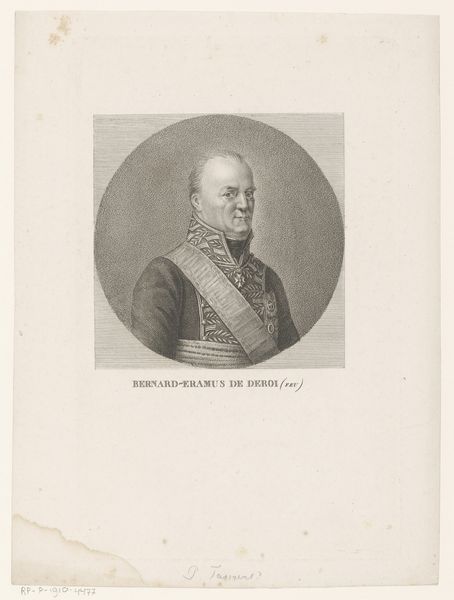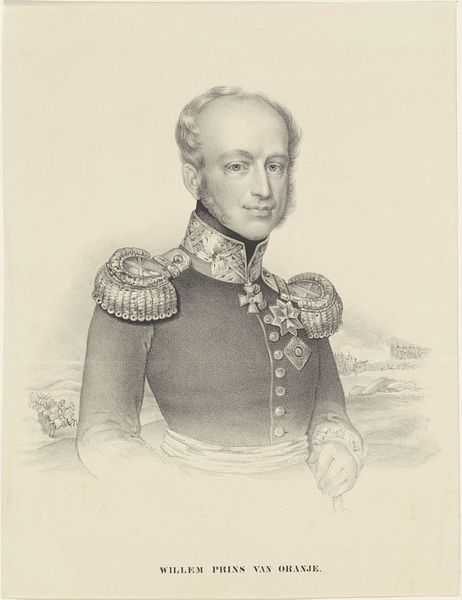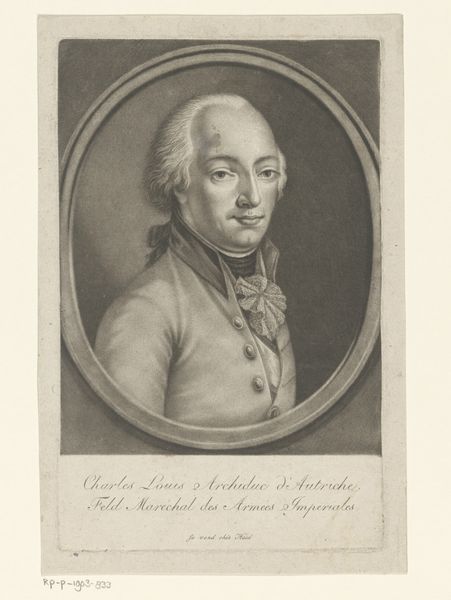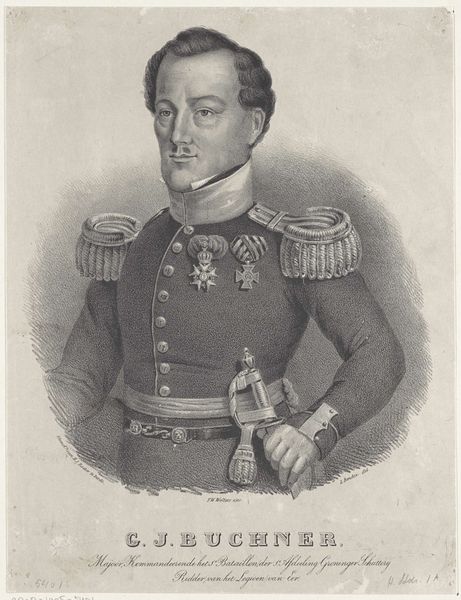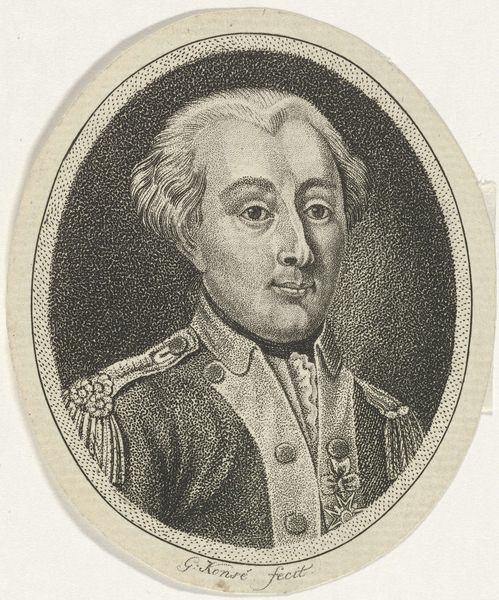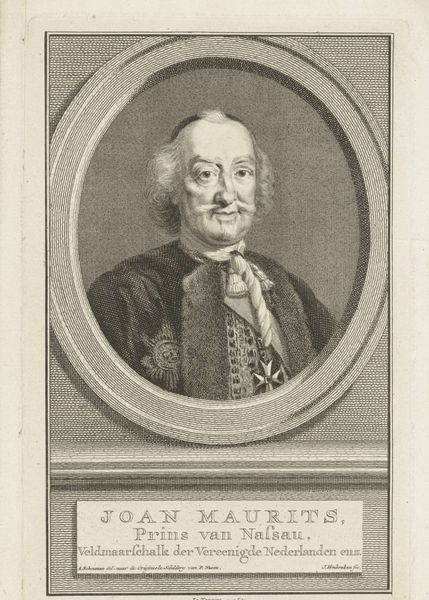
print, engraving
#
portrait
#
baroque
# print
#
old engraving style
#
archive photography
#
historical photography
#
history-painting
#
engraving
Dimensions: height 232 mm, width 175 mm
Copyright: Rijks Museum: Open Domain
Curator: Pieter Tanjé crafted this engraving of King Charles XII of Sweden in 1739, a somber piece now residing in the Rijksmuseum. What stands out to you? Editor: It's stark. Even beyond the monochrome medium, there's a severity to the king's gaze and posture that chills me slightly. It lacks the typical embellishment one expects of royal portraiture from that era. Curator: The bareness you perceive reflects a significant shift in the representation of power. Here, the symbolism leans towards a martial stoicism. His attire is practical, not opulent, and the oval frame is simple compared to more ornate baroque portraits. Editor: Exactly! The absence of those status markers speaks volumes. Was this an attempt to align Charles with a particular ideal—perhaps a "soldier king" rather than a bejeweled monarch? The uniformity of those tightly-buttoned doublet, it brings a level of enforced austerity, and I wonder how much of it has to do with social control during his time? Curator: Absolutely. Charles XII's reign was marked by almost constant warfare. This image consciously casts him as a dedicated military leader, evoking Roman ideals of duty and sacrifice, reflecting a need to reinforce loyalty. Think of Cincinnatus, called from his plow to lead, then returning to it. There is no plow here, only a hint of seriousness, despite this portrait not depicting a battlefield or regalia. Editor: So the lack of visible markers becomes the message itself. A fascinating reversal of fortune...and also quite controlling! In our contemporary understanding, portraiture always is so fraught with identity, gender and power dynamics. It speaks to what the portrait aims to accomplish, the visual vocabulary used to achieve such aims. Curator: This visual austerity contrasts with the more florid Baroque style prevalent at the time, representing an image of a ruler forged in battle and dedicated to his realm. It’s an iconic example of symbolic restraint shaping political iconography. Editor: It’s incredible how seemingly simple choices in representation can carry so much weight and tell a story. Curator: A stoic legacy, meticulously crafted through line and shadow, it seems.
Comments
No comments
Be the first to comment and join the conversation on the ultimate creative platform.
